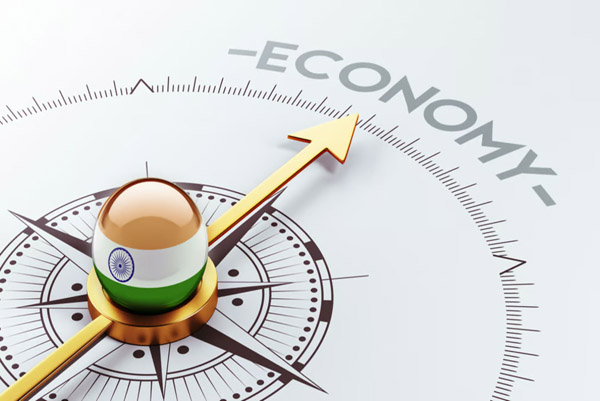By Nantoo Banerjee
As the Indian Rupee (INR) continues to decline against the US Dollar (USD) on an almost daily basis, it’s a relief that the Union Budget for 2025-26 has moved away from reiterating the goal of making the Indian economy a $5-trillion GDP to emerge as the world’s third-largest economy by the end of this year or in the near future. The budget fails to provide any clarity on how or when the INR will regain its strength against the USD. With INR being tied to the USD, disentangling from this relationship seems highly improbable, especially with US President Donald Trump’s fluctuating stance on diminishing the USD’s role in global markets and potential tariffs on countries considering such alternatives.
The economic survey presented in Parliament by the finance minister projects a modest GDP growth rate of 6.3 percent for FY26. When factoring in the inflation rate, the real GDP growth could plummet to around 5.7 percent. In 2024, the INR has depreciated by nearly three percent. A robust dollar adversely impacts import values, particularly crude oil, which constitutes around 25 percent of our total import bill, creating a ripple effect across various user industries. The budget shows minimal intention to regulate escalating non-oil imports, resulting in little rationale for optimistic future GDP benchmarks in dollar terms. Clearly, the government has struggled to stabilize the INR against the USD, which stands as a significant challenge for both the economy and the administration.
In contrast, China’s nominal GDP, with a comparable population size to India, is anticipated to reach US$18.28 trillion in 2024, reflecting a 5 percent increase from the previous year. China’s GDP growth is projected to hit 4.5 percent in 2025. The impact of a strong dollar on China’s economic activity is negligible, as it remains the world leader in production and exports. The nation’s economic vitality is driven primarily by its internal production rather than exchange rate fluctuations with the dollar. Conversely, India’s reliance on imports makes it significantly vulnerable to fluctuations in the Rupee-Dollar exchange rate.
On October 11, 2018, the union’s commerce and industry ministry released a vision for a US$5-trillion Indian economy. They stated: A Working Group was established to create a pathway for this achievement by 2025, and their report is currently being circulated for stakeholder feedback. The group conducted extensive consultations to gauge aspirations and potentials, forming sectoral sub-groups to advance the agenda.
The group expressed optimism over India’s rapid growth, currently ranked as the world’s sixth largest economy. Projections for medium-term growth are encouraging, underscoring India’s potential to reach a USD 5-trillion economy by 2025. The economic structure and emerging dynamics suggest capabilities to target $1 trillion from agriculture and allied sectors, $1 trillion from manufacturing, and $3 trillion from services.
The government has launched numerous initiatives across different sectors aimed at driving growth. In agriculture, the focus is shifting from a production-centric approach to an income-centric one, which broadens the scope for sector expansion. The proposed Industrial Policy 2018 outlines a comprehensive, sector-agnostic agenda designed to foster a globally competitive, modern, sustainable, and inclusive Indian industry. Additionally, the Champion Services sector initiative seeks to boost select service sectors. The working group recognizes these efforts and encourages renewed impetus towards achieving the $5-trillion economy objective.
On August 15, 2019, Prime Minister Narendra Modi articulated his vision for India to transform into a $5-trillion economy within five years, or by 2024, during his address on the nation’s 73rd Independence Day from the Red Fort. He noted that India had ascended to a $2-trillion economy after 70 years of independence, quickly jumping to a $3-trillion economy in just five years—from 2014 to 2019. “Having achieved such a significant increase in five years, we can aim for a $5-trillion economy in the following five years.” However, Finance Minister Sitharaman recently revised the timeline, stating India’s goal to reach a $5-trillion GDP by 2027-28, diverging from Prime Minister Modi’s 2024-25 target.
India’s Chief Economic Advisor, V. Anantha Nageswaran, has shown heightened enthusiasm regarding India’s potential to reach a $5-trillion GDP by FY 26, seemingly overlooking significant hurdles like inadequate infrastructure, rising import dependency, a depreciating Rupee, high unemployment, energy insecurity, and a vast informal sector. In January 2023, he asserted that India could grow at a rate of 6.5-7 percent and achieve a $5-trillion economy by 2025-26, with a potential of reaching $7 trillion by 2030, contingent upon exchange rate movements. He added that “if the Indian Rupee appreciates against the US dollar in the coming years, as is feasible,” India could achieve a dollar-denominated GDP growth exceeding nine percent. “Some of our targets may be realized sooner than we currently envision, making a $7 trillion GDP by 2030 quite plausible,” he explained.
Regrettably, the union budget appears to overlook the critical necessity for boosting extensive domestic production to limit imports. It is perplexing why gold remains the second-most significant import item after petroleum in a country like India, which is grappling with persistent trade deficits year-on-year. In the previous year, India imported a record 802.8 tonnes of gold, with imports surging to $14.8 billion in November, more than double the $7.13 billion recorded in October. The budget lacks strategic direction for significantly enhancing domestic production, investing heavily in physical infrastructure, generating millions of sustainable jobs, implementing high tariff and non-tariff barriers to sharply reduce imports and trade deficits, and ultimately stabilizing the Rupee.
For a nation with a vast population and low per capita income, a $5-trillion economy seems relatively minor. The Indian economy must accelerate its growth rate dramatically. Predictions by Trading Economics estimate India’s GDP to be around $3.781 trillion in 2025, significantly lower than earlier IMF forecasts of $4.340 trillion this year. The ambition to elevate the economy to $5 trillion and beyond hinges on managing the currency exchange rate with the US dollar in the near term, while persisting with current GDP growth strategies. (IPA Service)


Leave a Reply